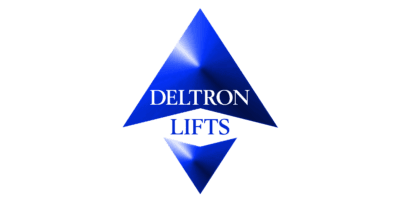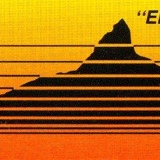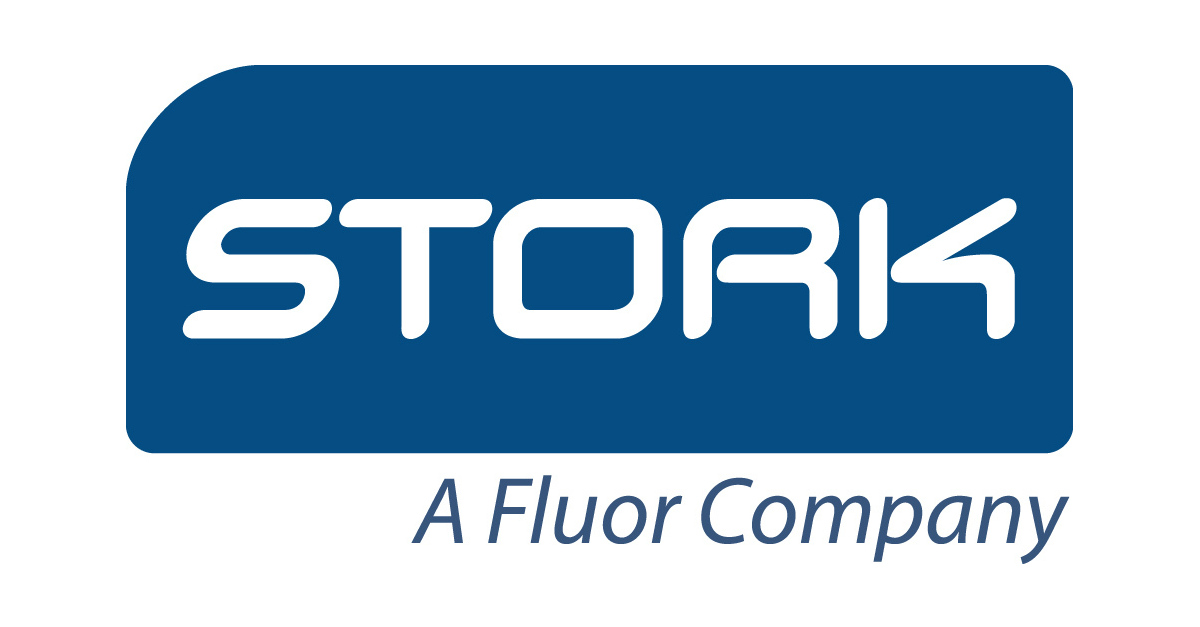Title Page
-
Site conducted
-
Conducted on
-
Prepared by
-
Location
Lift Information
-
Lift Type and Description
-
Lift ID Number
-
Manufacturers Serial Number
-
Lift Location
-
Signed
-
Name
-
Position
A.1 Earth Continuity
-
State Method Of Test
-
Is the maximum continuity resistance to the earth 0.5Ω or less?
-
Has the fuses protection of the safety circuit been satisfactorily tested by either a purpose made device or by measuring the resistance of the circuit and calculating the short circuit current or test according to the OEM manual?
-
If NO please explain
-
Does the result of the supplementary test(s) indicate further remedial work is necessary?
-
If YES, state your recommendation(s) for further action required
A.2 Electrical Safety Devices
-
Description and location of safety device(s) being inspection/tested and method test
-
Does the switch(s) operate satisfactorily?
-
Is all wiring, including earth wiring, properly terminated and in good condition?
-
Can it be determined that all parts are clean, secure and free of excessive wear with no signs of burning, or physical damage?
-
If NO please explain
-
Does the result of the supplementary test(s) indicate further remedial work is necessary?
-
If YES, state your recommendation(s) for further action required
A.3 Terminal Speed Reduction Systems
-
Does the terminal speed reduction system ensure that the lift slows down automatically to a speed not greater than the buffer design impact speed?
-
How was the system tested?
-
If NO, explain
-
Does the result of the supplementary test(s) indicate further remedial work is necessary?
-
If YES, state your recommendation(s) for further action required
A.4 Landing Door Interlocks
-
Do the electrical interlocks operate satisfactorily?
-
Does the mechanical locking operate satisfactorily?
-
Is all wiring, including earth wiring, properly terminated and in good condition?
-
Are all parts clean, secure and free of excessive wear with no signs of burning or physical damage?
-
If NO, explain
-
Does the result of the supplementary test(s) indicate further remedial work is necessary?
-
If YES, state your recommendation(s) for further action required
A.5 Lift Machine - Investigatory Test (Type A)
-
Gearbox type/model
-
Manufacturer
-
Year of manufacture (If Known)
-
Identification number
-
Does the machine run without excessive or unexpected noise, vibration or heat?
-
Does the machine run without excessive backlash and end float?
-
Are gear wheel teeth markings even and approximately central of the teeth?
-
Are gear teeth free of steps, pitting or ridges?
-
Is gear oil clean and free of any metal particles?
-
Are all rim bolts and shaft keys present and secure?
-
Are all bearing and shafts running without signs of excessive or unexpected heat, noise or vibration?
-
For screw and nut drives, is the wear on the load nut and any chain extension within acceptable limits?
-
Is the gearbox in a satisfactory condition?
-
If NO, explain below
-
Is there any reason why a more detailed examination 'type B' is required?
-
If YES, explain
-
Does the result of the supplementary test(s) indicate further remedial work is necessary?
-
If YES, state your recommendations(s) for further action required
A.6 Lift Machine - Comprehensive Test (Type B)
-
Gearbox type/model
-
Manufacturer
-
Year of manufacture (If Known)
-
Identification number
-
Does the machine run without excessive or unexpected noise, vibration or heat?
-
Are gear wheel teeth markings even and approximately central of the teeth?
-
Are gear teeth free of steps, pitting or ridges?
-
Is gear oil clean and free of any metal particles?
-
Are all rim bolts and shaft keys present and secure?
-
Are all bearing and shafts running without signs of excessive or unexpected heat, noise or vibration?
-
Is the gearbox in a satisfactory condition?
-
If NO, explain below
Crown Wheel and Worm
-
Backlash measured (mm)
-
Satisfactory?
-
Backlash measured (mm)
-
Satisfactory?
Gearbox, Plain Shafts and Bearings
-
Shaft/bearing location
-
Bearing running clearance (mm)
-
Provide details of any non destructive testing
-
Details and results of any oil analysis
-
Details of any other tests performed
-
Comments and observations
-
Does the result of the supplementary test(s) indicate further remedial work is necessary?
-
If YES, state your recommendations(s) for further action required
A.7 Overspeed Governors
-
Date of last recorded dynamic test if known
-
Indicate car or counterweight
-
Governor type
-
Serial number
-
Does the overspeed governor have a permanent label indicating the tripping speed?
-
Is the overspeed governor calibrated correctly for the rated speed of the lift and safety gear?
-
Does the pull through force of the governor effectively engage the safety gear against the guide rails?
-
If NO, explain
-
How was the overspeed governor tested?
-
Marked mechanical tripping speed (m/s)
-
Car up measured electrical 1 tripping speed (m/s)
-
Car up measured electrical 2 tripping speed (m/s)
-
Car down measured electrical 1 tripping speed (m/s)
-
Car down measured electrical 2 tripping speed (m/s)
-
Car down measured mechanical tripping speed (m/s)
-
Comments and observations
-
Does the result of the supplementary test(s) indicate further remedial work is necessary?
-
If YES, state your recommendations(s) for further action required
A.8 Governor Operated Safety Gear - Instantaneous
-
Indicate car or counterweight
-
Safety gear type and/or referance
-
Are all linkages and moving parts free of any defects, deterioration or wear that may prevent their free and effective operation?
-
Are the surfaces of any friction elements free of any abnormal or excessive wear that may prevent free and effective operation of the safety gear system?
-
Does the safety gear mechanism move freely and engage the guide rails satisfactorily?
-
If NO, explain
Dynamic Test Conditions (where appropriate)
-
Load in car? (kg)
-
Speed at activation? (m/s)
-
How was the system tested?
-
Comments and observations
-
Did the safety gear operate and stop the car as required?
-
If NO, explain
-
Does the result of the supplementary test(s) indicate further remedial work is necessary?
-
If YES, state your recommendations(s) for further action required
A.9 Governor Operated Safety Gear - Progressive Type
-
Indicate car or counterweight
-
Safety gear type and/or referance
-
Are all linkages and moving parts free of any defects, deterioration or wear that may prevent their free and effective operation?
-
Are the surfaces of any friction elements free of any abnormal or excessive wear that may prevent free and effective operation of the safety gear system?
-
Does the safety gear mechanism move freely and engage the guide rails satisfactorily?
-
If NO, explain
Dynamic Test Conditions (where appropriate)
-
Load in car? (kg)
-
Speed at activation? (m/s)
-
Did the safety gear operate and stop the car as required?
-
If NO, explain
-
How was the system tested?
-
Does the result of the supplementary test(s) indicate further remedial work is necessary?
-
If YES, state your recommendations(s) for further action required
A.10 Safety Gear Operated By Other Means
-
Indicate car or counterweight
-
Safety gear type and/or referance
-
Are all linkages and moving parts free of any defects, deterioration or wear that may prevent their free and effective operation?
-
Are the surfaces of any friction elements free of any abnormal or excessive wear that may prevent free and effective operation of the safety gear system?
-
Does the safety gear mechanism move freely and engage the guide rails satisfactorily?
-
If NO, explain
Dynamic Test Conditions (where appropriate)
-
Load in car? (kg)
-
Speed at activation? (m/s)
-
How was the safety gear tested?
-
State the stopping distance (progressive type only mm)
-
Does the safety gear stop the car or counterweight in the downward direction during dynamic testing?
-
Was the floor of the lift car less than 5° to the horizontal after the safety gear activated and before it is released?
-
After the test, confirm that no deterioration has occurred that could adversely affect the safety of the lift and correct operation of the safety gear system
-
* Some safety gear systems (slack rope type) may not be possible to operate. In such circumstances indicate that a dynamic test has not been made and describe in detail what has been inspected, the condition of the device, the probability of successful operation and why it could not be operated.
-
If No, Explain
-
Does the result of the supplementary test(s) indicate further remedial work is necessary?
-
If YES, state your recommendations(s) for further action required
A.11 Device To Prevent Overspeed Of The Ascending Lift Carrier
-
Date of the last recorded dynamic test if known
-
Device type and/or referance
-
Are all linkages and moving parts free of any defects, deterioration or wear that may prevent their free and effective operation?
-
Are the surfaces of any friction elements free of any abnormal or excessive wear that may prevent free and effective operation of the braking device?
-
Does the device mechanism move freely and engage the ropes or pulley ect, satisfactorily?
-
Does the device operate satisfactorily during the dynamic testing?
-
After the test, confirm that no deterioration has occurred that could adversely affect the safety of the lift and correct operation of the system?
-
If NO, explain
Dynamic Test Conditions (where appropriate)
-
Load in car? (kg)
-
Speed at activation? (m/s)
-
How was the device activated?
-
Does the result of the supplementary test(s) indicate further remedial work is necessary?
-
If YES, state your recommendations(s) for further action required
A.12 Unintended Car Movement Protection Means
-
Date of the last recorded dynamic test if known
-
Device type and/or reference
-
Does the device stop the lift car within the specified stopping distance?
-
Does the device operate satisfactorily during the dynamic testing?
-
After the test, confirm that no deterioration has occurred that could adversely affect the safety of the lift and correct operation of the system
-
If NO, explain
-
How was the system tested?
-
Does the result of the supplementary test(s) indicate further remedial work is necessary?
-
If YES, state your recommendations(s) for further action required
A.13 Energy Dissipation Buffers
-
(For buffers without return switch) After compression does the piston return to its fully extended position within 15 minutes?
-
(For all buffers) Does the buffer compress when the car is moved down onto it
-
(For all buffers) After compression does the piston return to its fully extended position?
-
If NO, explain?
-
Does the result of the supplementary test(s) indicate further remedial work is necessary?
-
If YES, state your recommendations(s) for further action required
A.14 Suspension System
-
Describe suspension means (synthetic ropes, flat belts, ect)
-
State your observations from visual inspection of suspension means and anchorages
-
Are all suspension ropes/chains/belts free from signs of wear or damage that may prevent their continued use until the next thorough examination?
-
If NO, explain
-
How was the suspension system tested?
-
Does the result of the supplementary test(s) indicate further remedial work is necessary?
-
If YES, state your recommendations(s) for further action required
A.15 Car Overload Detection Warning Device
-
Date of last recorded test (if known)
-
State method of test
-
Does the overload device and its car indicator operate correctly to prevent use of the lift?
-
Is the load at which it is set or calibrated satisfactory to prevent overloading?
-
State the load at which the detection device operates
-
If NO, explain
-
Does the result of the supplementary test(s) indicate further remedial work is necessary?
-
If YES, state your recommendation(s) for further action required
A.16 Hydraulic System
-
State the full load static pressure (measure or calculated)
-
Is the pressure test as described in 4.11 satisfactory?
-
State pressure drop (if applicable)
-
Is this pressure drop acceptable?
-
After the above test, is the integrity of the hydraulic system maintained?
-
Does the pressure relief valve operate satisfactory?
-
If NO, explain
-
How was the system tested?
-
Does the result of the supplementary test(s) indicate further remedial work is necessary?
-
If YES, state your recommendation(s) for further action required
A.17 Hydraulic Cylinders In Boreholes Or Similar Locations
-
State the full load static pressure (measure or calculated)
-
Is there evidence of any significant pressure drop or leakage?
-
If YES, explain
-
State pressure drop (if applicable)
-
Is this pressure drop acceptable?
-
After the above test, is the integrity of the hydraulic system maintained?
-
If NO, explain
-
Does the result of the supplementary test(s) indicate further remedial work is necessary?
-
If YES, state your recommendation(s) for further action required
A.18 Hydraulic Rupture/Restrictor Valves
-
State method of test
-
Does the rupture/restrictor valve operate correctly? (Note - a restrictor valve should lower the car at a speed not exceeding 0.3m/s)
-
If NO, explain
-
Does the result of the supplementary test(s) indicate further remedial work is necessary?
-
If YES, state your recommendation(s) for further action required
A.19 Electrical Anti-Creep Device
-
State method of test
-
Does the anti-creep device operate satisfactorily within the unlocking zone at each floor?
-
Does the anti creep device operate both when the car and the landing doors open, and when they are closed at each floor?
-
If NO, explain
-
Does the result of the supplementary test(s) indicate further remedial work is necessary?
-
If YES, state your recommendation(s) for further action required
A.20 Mechanical Anti Creep Device (Pawl or Clamping Device)
-
State method of test
-
Are all linkages and moving parts free of any defects, deterioration or wear that may prevent their free and effective operation?
-
Are the surfaces of any friction elements free of any abnormal or excessive wear that may prevent free and effective operation of the braking device?
-
Are the contact surfaces of any engaging components correctly aligned, in good condition and free of any abnormal or excessive wear that may prevent free and effective engagement?
-
Does the device mechanism move freely and engage satisfactorily with full load in the lift car?
-
If NO, explain
-
Does the result of the supplementary test(s) indicate further remedial work is necessary?
-
If YES, state your recommendation(s) for further action required
A.21 Low pressure Detection Device
-
Date of last recorded test (if known)
-
Device type and/or reference
-
State method of test
-
Does the low pressure detection operate satisfactorily?
-
If NO, explain
-
Does the result of the supplementary test(s) indicate further remedial work is necessary?
-
If YES, state your recommendation(s) for further action required
A.22 Traction, Brake and Levelling
-
Date of last recorded test (if known)
-
Does the brake lift correctly
-
State the brake operating voltage
-
Is the brake adjusted correctly in accordance with OEM instructions?
-
Are all gripping components within the brake satisfactory?
-
Are all other components of the brake system in a satisfactory condition?
-
For brakes where one braking element can be disabled (check OEM instructions), does the brake with each element disabled (check both) hold the empty lift car?
-
Where the brake is fitted with monitoring devices, do these function correctly in accordance with OEM instructions?
-
Does the brake stop the empty lift car travelling in the upward direction, without loss of traction or excessive slide in the upper part of the lift well?
-
Does the brake stop the lift car with 125% load in the car travelling in the down direction in the lower part of the lift well without excessive slide?
-
With the machine driving against the de-energised brake, does the brake hold the lift car stationary or drive shut down in an acceptable time?
-
If NO, explain
-
Does the result of the supplementary test(s) indicate further remedial work is necessary?
-
If YES, state your recommendation(s) for further action required
A.23 Car/Counterweight Balance
-
Date of last recorded test (if known)
-
Where the car mass has been changed, state the empty car mass
-
State the balance percentage as found
-
Is the mass of the empty car and balance correct as OEM instructions
-
If NO, explain
-
State the method of determining the balance
-
Does the result of the supplementary test(s) indicate further remedial work is necessary?
-
If YES, state your recommendation(s) for further action required
A.24 Automatic Power Operated Doors
-
Date of last recorded test (if known)
-
Is the force to prevent closing of the car and landing doors 150N or less?
-
Is the kinetic energy of the car and landing doors 10J or less?
-
Do all the protective devices reverse the doors?
-
If the doors are able to close with the reversal device deactivated or having failed, is the kinetic energy no more than 4J and accompanied by an audible signal?
-
For doors made from glass (expect for vision panels) is the force to prevent opening of the car and landing doors 150N or less?
-
If NO, explain
-
Does the result of the supplementary test(s) indicate further remedial work is necessary?
-
If YES, state your recommendation(s) for further action required
A.25 Other Supplementary Tests
-
Date of last recorded test (if known)
-
Component or function to be tested
-
State method of test
-
Does the component or function operate satisfactorily?
-
If NO, explain
-
Does the result of the supplementary test(s) indicate further remedial work is necessary?
-
If YES, state your recommendation(s) for further action required











